73o, cyrstal clear.
I got to the Citico about noon just as the kids were getting suited up. They were from the Boys and Girls Club of the surrounding area and were happy and eager to get in on such a pretty day. I have been hired by the Cherokee National Forest to guide snorkeling trips on the Conasauga but decided to tag along for a Citico version that Jim and Frank are trying to develop and establish. The day could not have been more perfect, the sky was blue and the water clear, and comfortable for me bareskin at 73o.
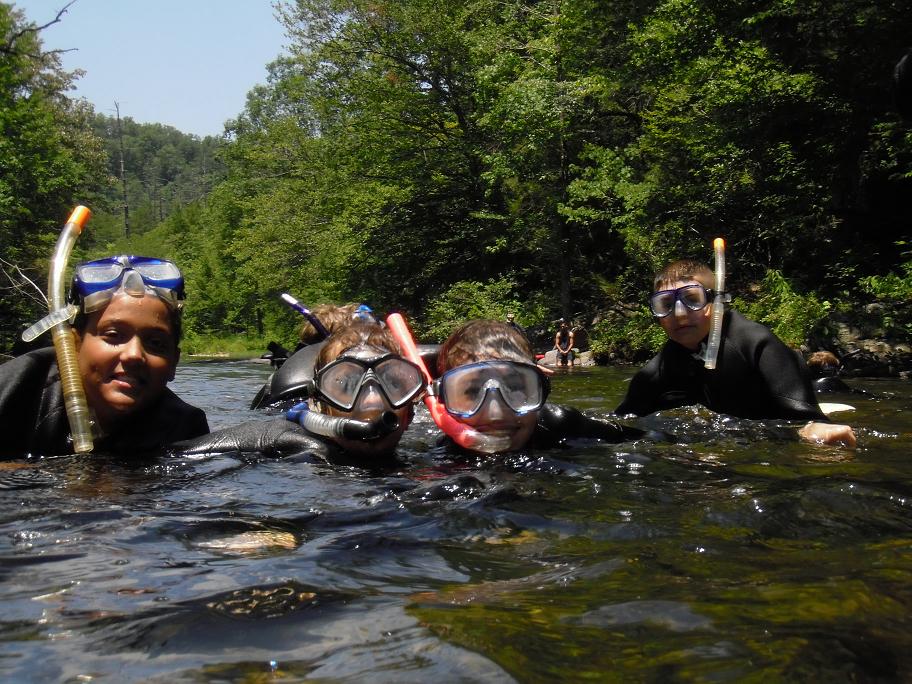
I got this nice shot of some happy snorkelers. There were about 20 boys and girls scattered up and down the long flowing pool. Of course the excitement and diversity were at the riffle runs but the deep pools had Redhorse, Musk Turtles and plenty of Rockbass hiding in the shadows for those who wanted to float above.
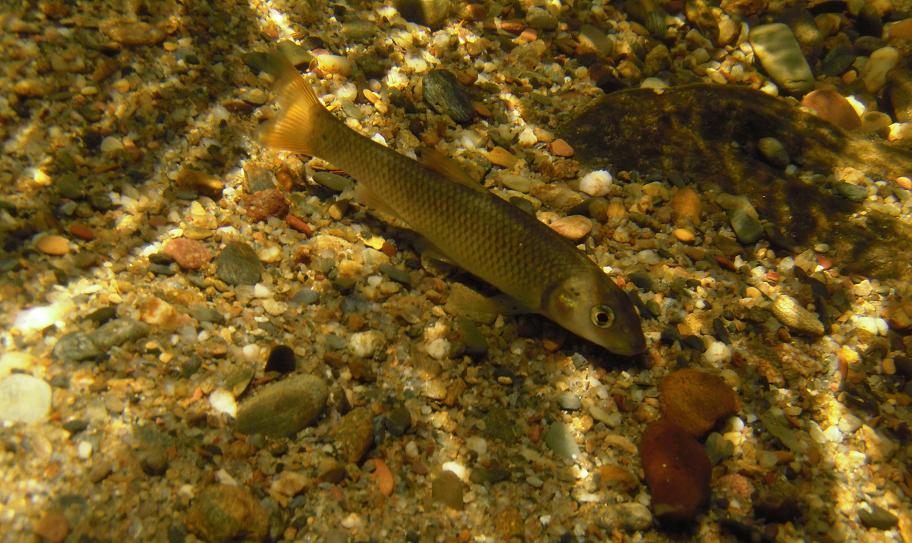
Who does not like these cute fish? They always look friendly and provide a wonderful service to many minnows and shiners with their mound building architecture. There sure are a lot of different chubs even here in Tennessee but i like these special.
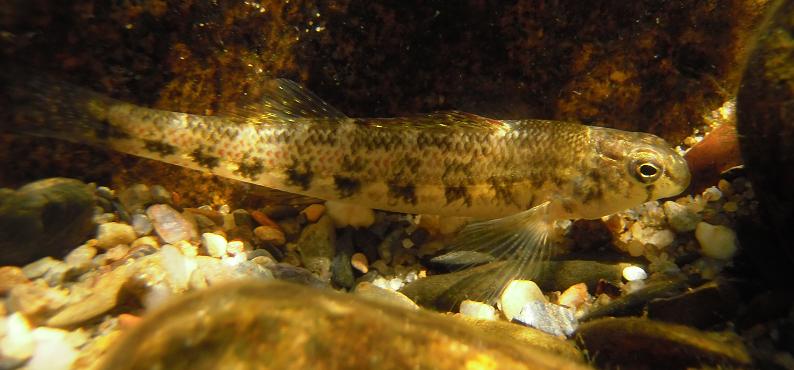
Only in the early spring's cold water will you find these darters in color. Probably the most common darter in my area. They like all kinds of habitat and will spawn just about anywhere it seems.
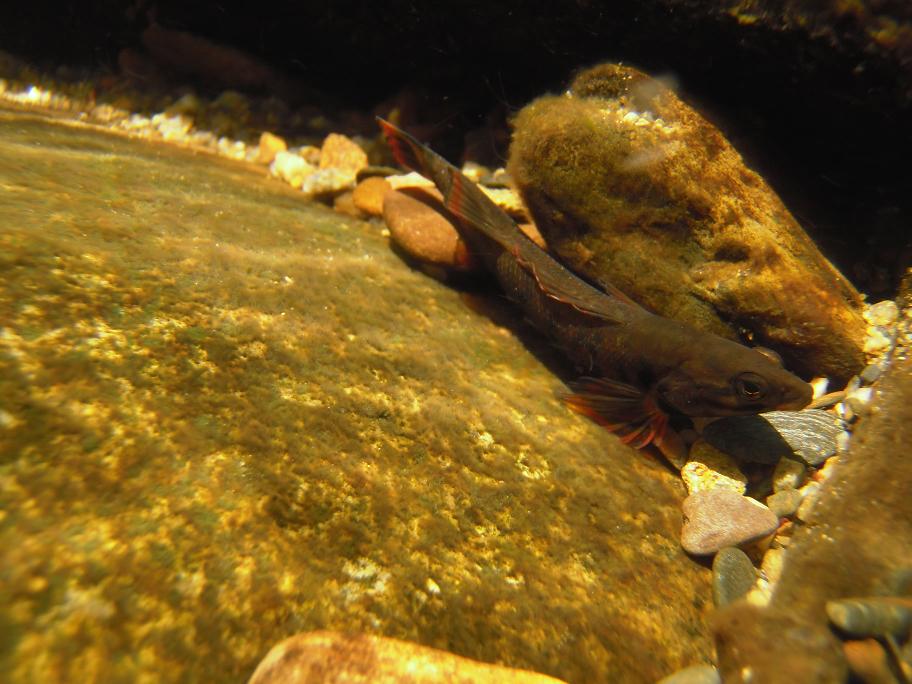
The Redlines again impressed me with their chameleon color shifting ability. Males were often near jet black when first exposed from underneath stones but then shifted to a lighter body color if they stayed out in the open. Today however they much prefered to stay hidden and this made for difficult photos of these animated darters. They were content to peer out from crevases or dash along the shadowed edge of a rock to another dark crevase, often driving out another male with a quick display of errect fins.
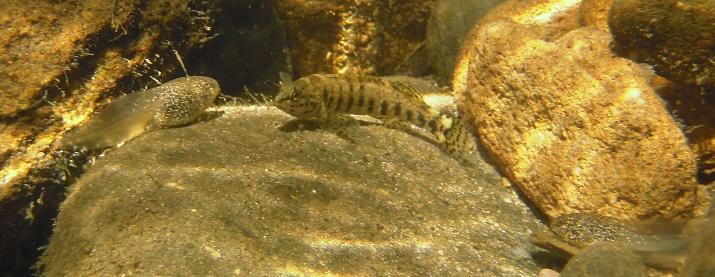
The females came into the open more readidly, pecking at any tidbits of food exposed when small rocks were gently moved. Their colors are much different from the males but their body shape is the same except when they are egg plump. The females have a pretty cream base color which is often striking on the diagonal barred sides and especially the fins. Both males and females sport an hourglass shape at the base of their caudal fin which aids in identifying this species.
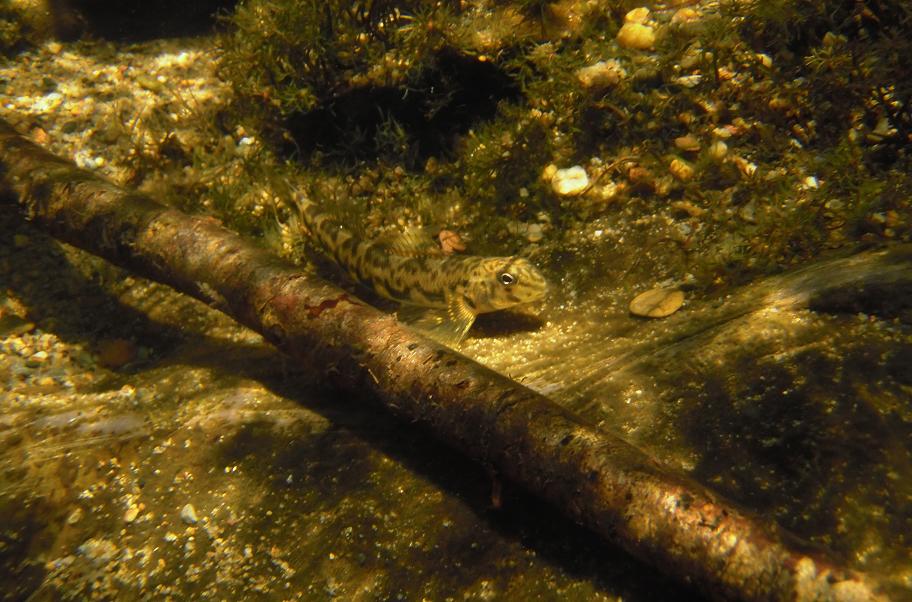
Greensides were common, though only a couple would allow a close enough approach for pictures. There was no hint of color as their spawning season is well past, as is for most of the species observed. Some Redbreasts still guarded nests and the Redlines may have been courting a bit but i saw no gravid females. Lots of small fish and fry were seen in backwater pools and eddies so a prosperous spring for many it has been.
The club, chaperones and CNP crew loaded up and left about 2 or 3 pm but i stayed in the water enjoying the opportunity the day offered. I think a lot of those kids would have stayed much longer if they had not been loaded onto the bus after such a short stay. Hopefully several will get a mask for themselves and find a new experience when they visit another clear stream or lake. They certainly seemed to enjoy themselves this day.

After everyone was out of the water it quickly returned to crystal clarity and i took the opportunity to explore and take as many photos as i could. My just repaired Olympus Stylus had quickly became waterlogged with the first shot of the day and shorted out. I pulled out my backup, a lesser model, and tried to refine its controls but only about 10% of the photos taken were acceptable and of those only about a dozen worth sharing. I drained all 3 batteries in the process, including a bit of video.
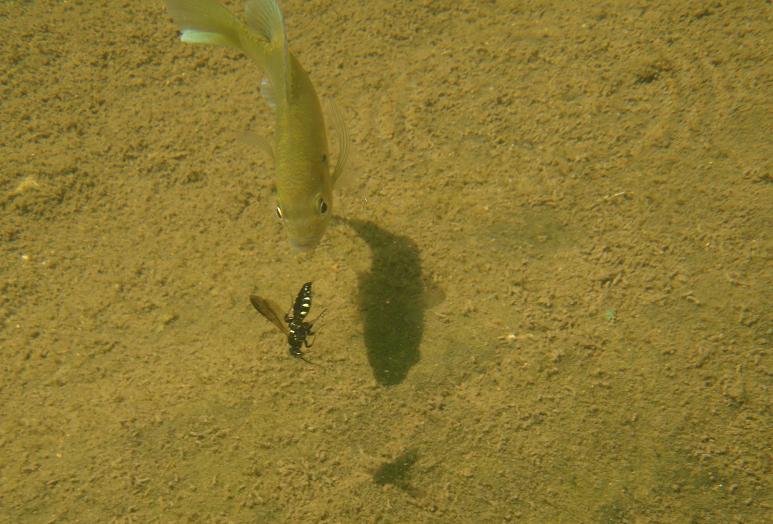
I found a dead hornet drifting downstream and followed, watching various minnows pick at it cautiously. Finally a Redbreast Sunnie swam in aggressively and sucked it in without hesitation, then spat it out a couple times before finally swallowing it for good. The stinger was sticking out of the hornet's abdomen so probably this was an experienced concern to all the potential nibblers.

That is one wide pile of poo. Fish of all sizes were upstream and downstream, the Citico is a wonderful creek to visit for sure. Herds of Stonerollers are constantly grazing and its interesting how this riverscat piles up in a few select places.
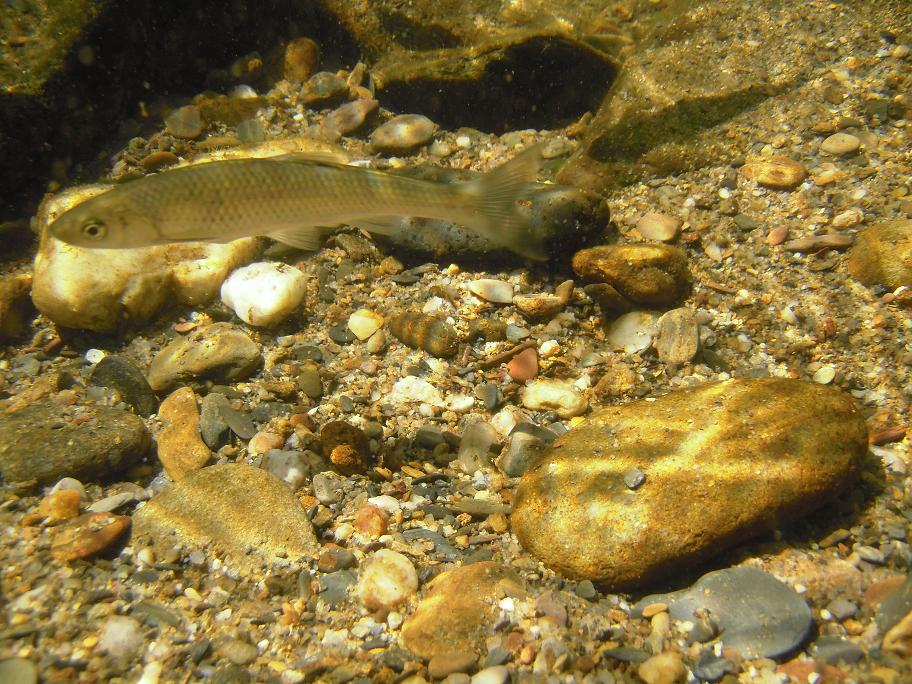
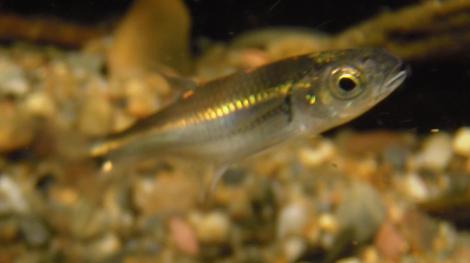
Shiners are still difficult to capture with a my lens, and much easier with a net. Whittails were probably the most common and maintained a flurry downstream of my substrate disturbance. A few pearlescent tuberculed males were seen and today i wish i had spent some time trying to capture them photographically. A pretty fish but difficult to capture as are all shiners with my current skills and cameras. I think the second image is an agape Tennessee though i cant make out the rectangular caudal spot.
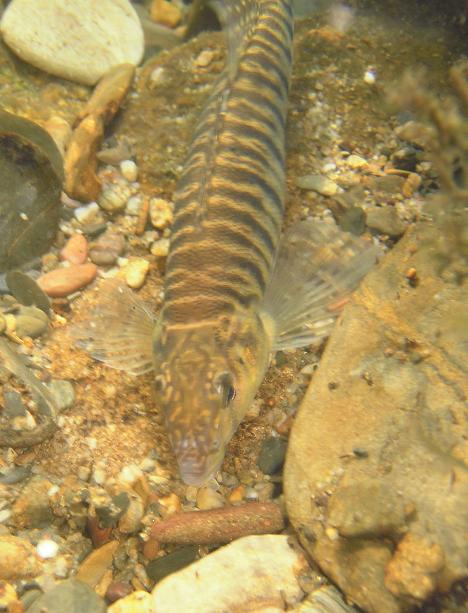
Logperch were common and often in busy groups foraging. At the end of the day i came across this mature individual who allowed a very close and prolonged observation. Most of these still pictures were out of focus but i was able to shoot an extended video which looks ok except for the low resolution. I need to learn how to post to YouTube before i can share it, but will provide a notice later on this post when i do so. The proud and confident Loggie was nonstop busy flipping stones and eating any exposed morsels. A perfect actor for a Citico documentary.
Fish identified today were...
Shiners: Stripe, TN, Whitetail, Warpaints.
Darters: Logperch, Gilt, TN Snub, Redline, Greenside, Speckled.
Sunfish, Bluegill, Redbreast, Rock, Smallmouth, one fat bland Bass. I really liked all the Rockbass, very handsome in their gold edged flecky pattern and deep red eye.
Chubs: River, Creek, and shallow schools of Bigeyes.
Misc: the usuals... Sculpins, Stonerollers, Redhorse, and kingsize Hogsuckers.
Jim and Gary added a sighting of a Longnose Gar, Telescope Shiners, which are a tough call for me mixed in with the flurry of Tennessee Shiners, and a Wounded Darter, which looks a lot like a Redline unless your holding it. In fact i am now concerned i may be misIDing some of those Redlines.
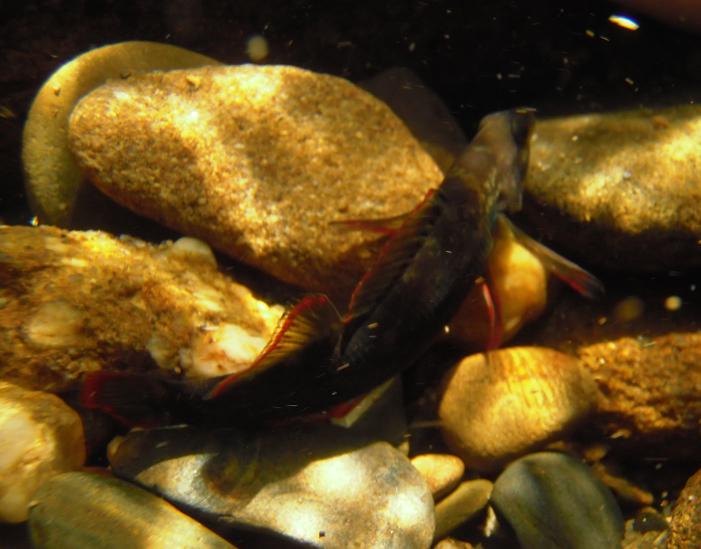
We did not see any Buffalo as they had gone back to the Tellico reservoir, nor Drum, Trout, Madtoms nor Topminnows.
The Citico is a fun place to observe a lot of Tennessee's unique fish. If you travel the length of it you can see even more diversity including several rare species. There are plenty of places to stop along the gravel and paved road as well as several primative campsites if you want to stay for a few days. Its about 1.5 hours SW from Knoxville and 2 NE from Chattanooga near the small town of Vonore off of 411, a great road to wander passing over the Hiwassee, Ocoee and Conasauga.
Casper
Summer Heat? Get in the cool water.
Edited by Casper, 07 July 2010 - 08:01 PM.







